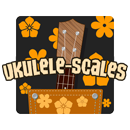Introduction to Modes: the major scale
What Are the Modes?
The modes are simply scales taken from a reference scale, every note in this reference scale gives rise to a mode. The main and most important modes come from the major scale, namely that the seven notes of the same major scale will each be the starting point of a different mode (thus giving rise to seven modes).
The Value of Modes
The value of modes is that each mode of the same major scale corresponds to a precise degree of the latter, implying that each mode also corresponds to the chord on the same degree. The modes are very useful for improvisation on a grid of chords which are diatonic or even foreign to the main key of a track. It can also be very interesting on the same chord to play different modes to help evolve your improvisation (some of these modes have a very specific and recognizable sound).
The Seven Modes of the Major Scale
Since the major scale contains seven notes, we will have seven modes derived from this scale. Each note in the Major range will become the starting note and therefore the tonic for each of the seven modes. Each note of these seven modes will be exactly the same as those of the major scale from which they are derived. In order, the modes from the major scale are called Ionian, Dorian, Phrygian, Lydian, Mixolydian, Aeolian, and Locrian. Just remember, regardless of the key, the order of the modes remains the same and we assign to each note of the major scale the mode corresponding to the same degree.
Specific Characteristics of Each Mode
Among the seven modes of the Major scale, there are three modes which contain a Major third, the Ionian, the Lydian and the Mixolydian. There are four modes which contain a minor third, the Dorian, the Phrygian, the Aeolian, and the Locrian. Let us recall that the third determines the nature of the scale: Major third => Major scale, minor third => minor scale. The Ionian, Lydian and Mixolydian modes are therefore considered major modes. The Dorian, Phrygian, Aeolian, and Locrian modes are therefore considered minor modes.
Major Modes
Ionian
The Ionian mode corresponds to the major scale, its characteristic note being its major seventh. It is used with a major chord or a major seventh, and just like the major scale, does not bring any particular color to improvisation.
Lydian
The Lydian mode is a major mode which contains a higher fourth, its characteristic note. The Lydian mode is used on a major chord or a major seventh and due to its higher fourth, it will bring a specific feel and color to the improvisation. For example, on an Amaj7 chord, it is possible to play the mode of A Ionian (A Major scale) and also to play the Lydian mode, fourth mode of the E Major scale. The higher fourth of A (compared to the Ionian mode of A which has a perfect fourth, D), will therefore bring a specificity and a "color" to improvisation. Lydian is often used in classical music and movie soundtracks.
Mixolydian
The Mixolydian mode is a Major mode which has the feature of containing a minor seventh, its characteristic note. The Mixolydian mode is most often played on a dominant seventh chord. For example, on E7, you must play the E Mixolydian mode, fifth mode of the A Major scale. You will likely hear Mixolydian far more often than Lydian.
Minor Modes
Aeolian
The Aeolian mode corresponds to the natural minor scale. As we are used to hearing this scale, it does not have a very specific feel to our ears. Its characteristic note is its sixth minor. It is used on a minor chord or a minor seventh.
Dorian
The Dorian mode is a minor mode that has the feature of containing a sixth major (its characteristic note). It is used on a minor chord or seventh minor, and, due to its major sixth, it will bring a specific feeling to improvisation. For example, on an Am7 chord, it is possible to play the Aeolian mode (natural A minor scale) and also to play the A Dorian mode, the second mode of the G Major scale, with the note F# (as opposed to the Aeolian mode of A which has a minor sixth of F). This will bring a specific feel and "color`" to improvisation. Among other things the Dorian mode is the mode to use on a minor chord containing a Major sixth or thirteenth.
Phrygian
The Phrygian mode is a minor mode which has the feature of containing a second minor, which is its characteristic note. It is used on a minor chord or a seventh minor, and, due to its second minor, it will bring a specific color to the improvisation. For example, on an Am7 chord, it is possible to play the A Aeolian mode, the mode of The Dorian as we just talked about. It also can play the mode of The Phrygian, 3rd mode of the F Major scale, including The note B flat, second minor of A (in relation with the Aeolian and Dorian modes of A which contain a second Major, B flat), which will therefore bring a "tension" to the improvisation.
Locrian
The Locrian mode is a minor mode which has the feature of diminished fifth as its characteristic note. The Locrian mode is most often used on a fifth flat seventh minor chord (m7b5). For example, on Em7b5, it is necessary to play the mode of E Locrian, seventh mode of the F major scale.


